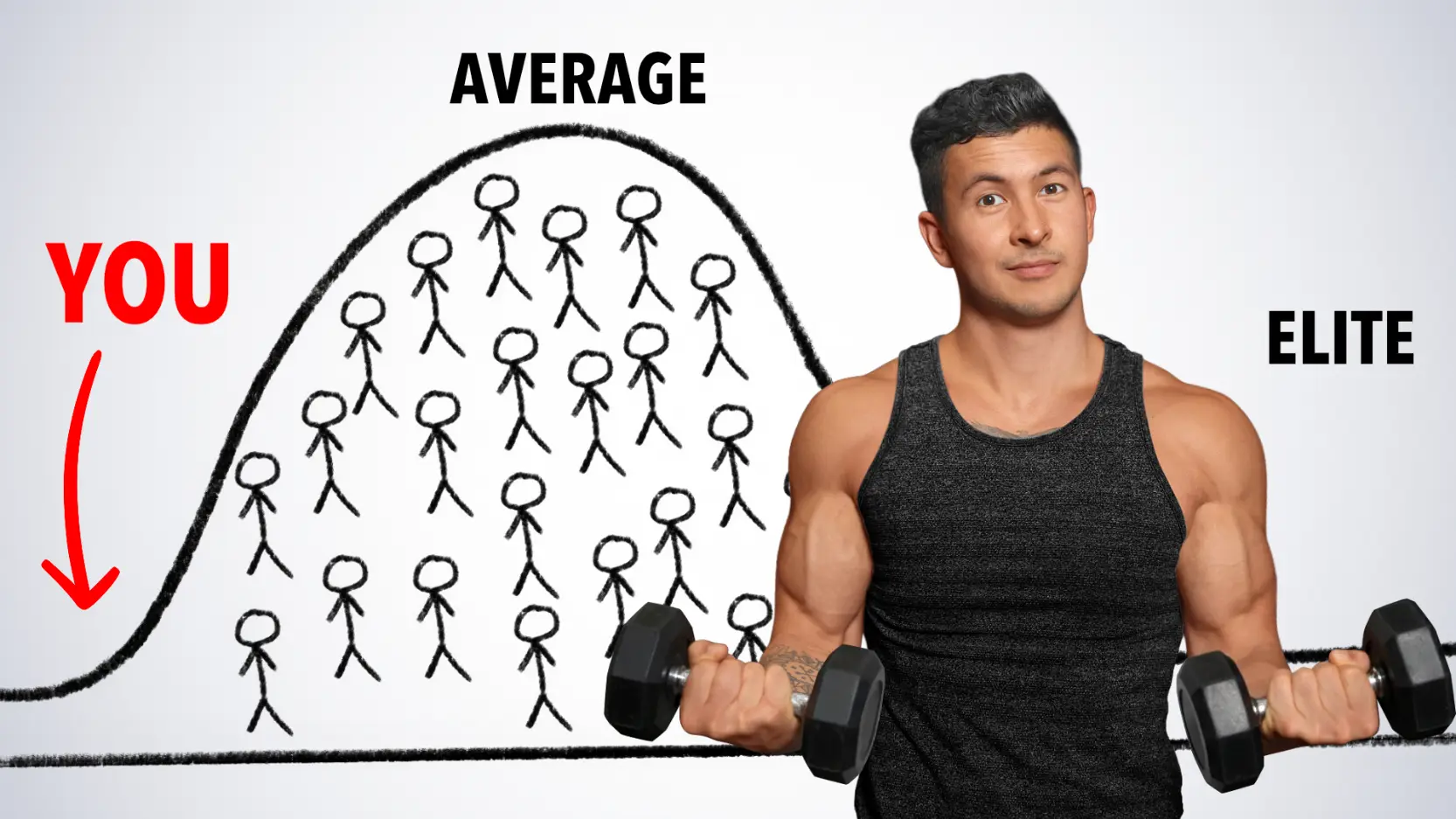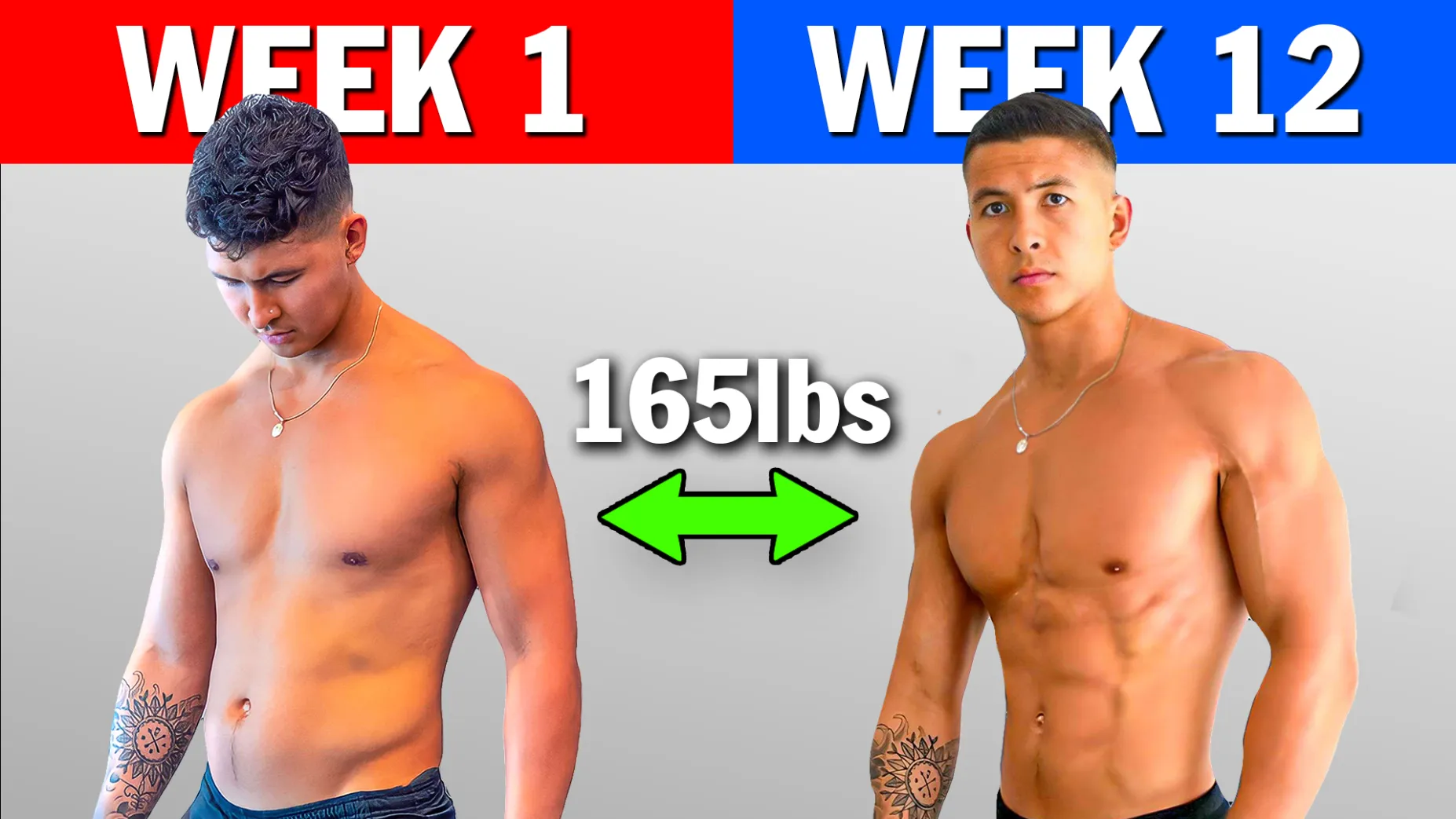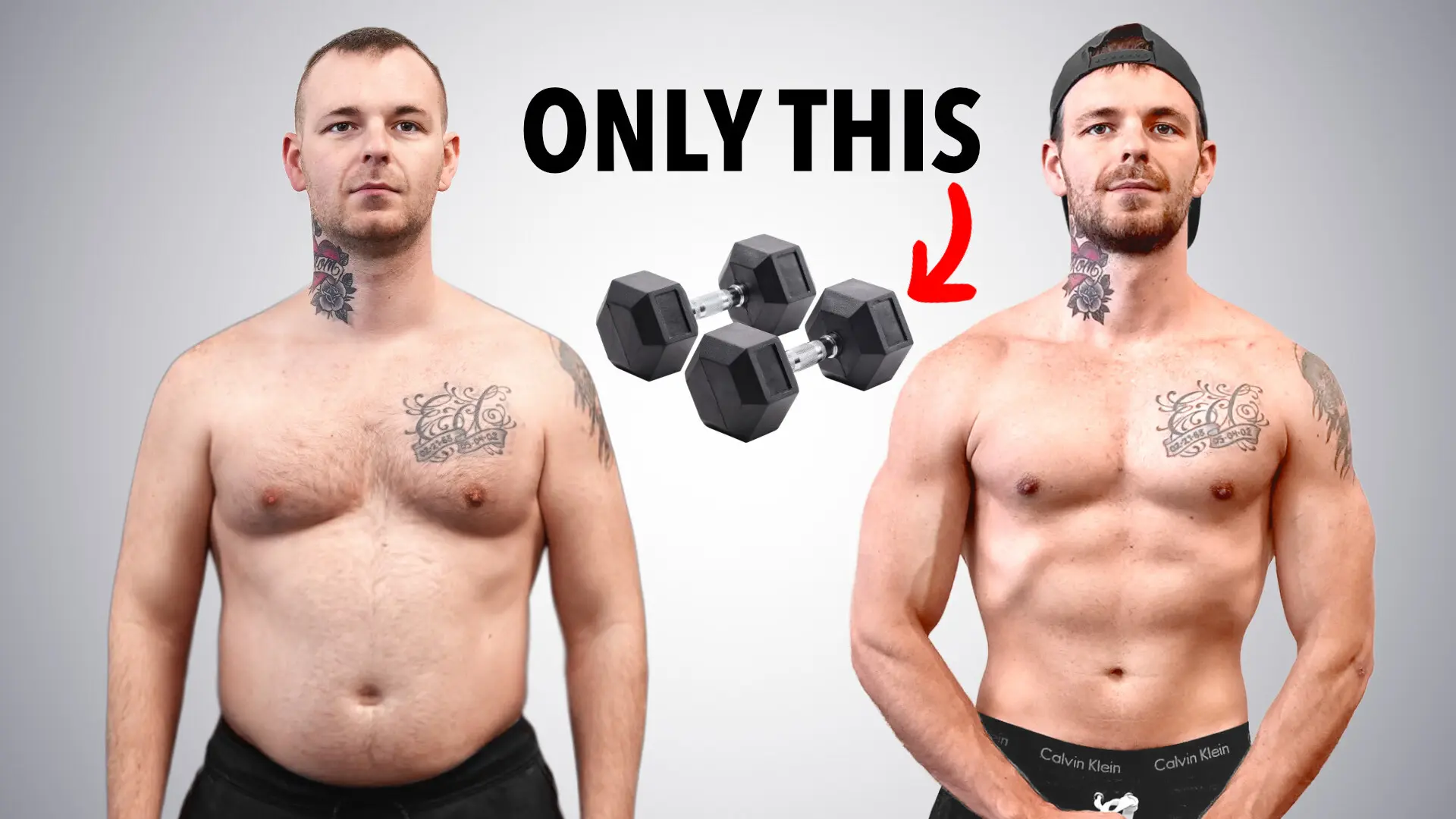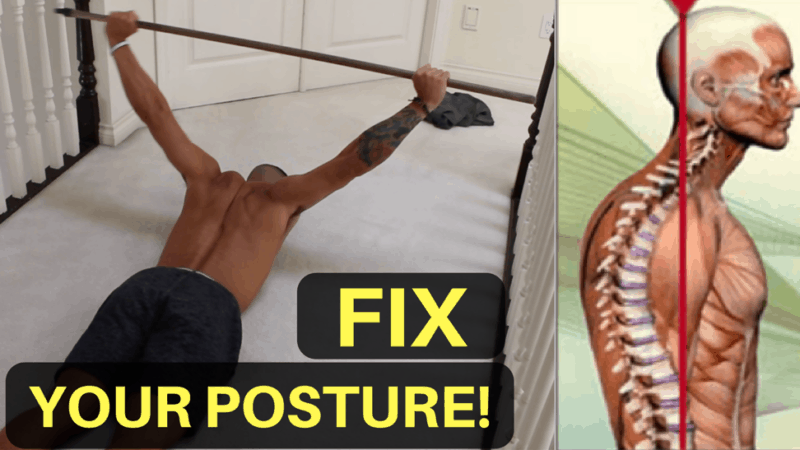
How To Fix Your Hunchback Posture In 10 Minutes Per Day
“How can I fix my hunchback posture?” is one of the most common questions I get asked. In this article, I'll cover an exercise routine that you can do daily to fix your rounded shoulders posture.
And best of all?
They can all be done at home or at the gym, enabling you to correct your posture in as little time and effort as possible!
Unfortunately, hunched over posture is something the majority of people have nowadays due to the increased usage of technology and time spent being sedentary.
But just because it’s common, doesn’t mean that you should just ignore your rounded shoulders.
By correcting your hunchback posture, you will look better, taller, and more confident.
Also, it’s critical to note that hunched over posture can make you more prone to injury in the gym and decrease your overall strength in key lifts, such as the bench press and overhead press.
It's frustrating. That's why I never neglect to account for postural work in my programs. Removing the risk of various muscle imbalances allows you to achieve your ideal physique in the most time-efficient manner. If that sounds good to you:
Click the button below to take my analysis quiz to discover the best program for you:
↓
What causes hunched shoulders?
Before I cover the specific exercises to fix hunched shoulders, it’s first important for you to understand the 2 main causes of your hunched over position:
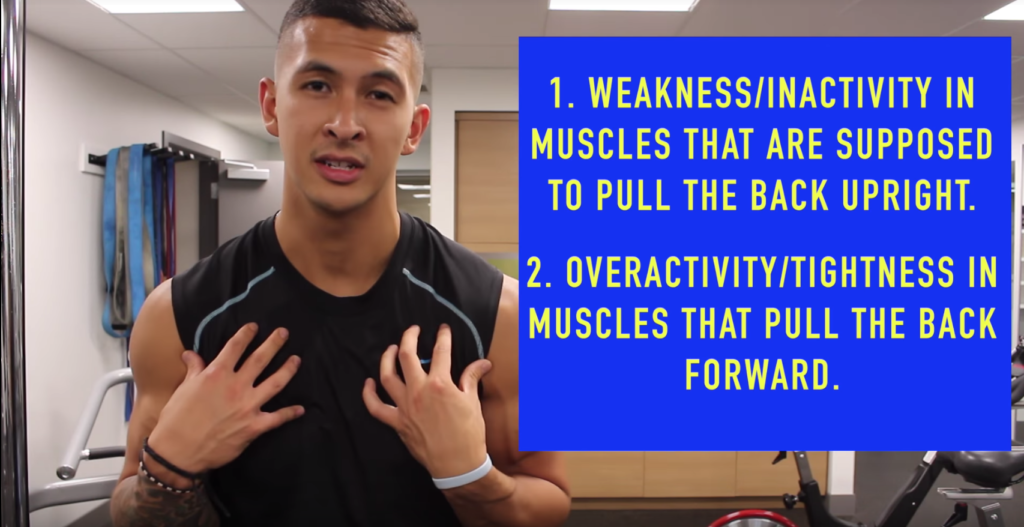
- A weakness or inactivity in muscles that are supposed to pull your back and shoulders upright
- Overactive and tight muscles that pull your back and shoulders forward
I've just explained that rounded shoulders are caused by a combination of weak (cause #1) and overly-tight (cause #2) muscles. Therefore, it makes sense that you should perform a mix of strengthening and mobility exercises to counter-act their problematic pulls.
But – which exercises, exactly? Let’s find out, shall we?
Strengthening exercises
Let’s first cover strengthening exercises.
Most people will tell you to simply “train your back more” in order to correct your rounded shoulders posture, but this, honestly, isn’t very good advice for most people.
Why? Well, because it’s not all of your back muscles that are weak. Specifically, it's your lower traps and rhomboids that aren’t getting enough activation and are, therefore, not strong enough to pull your back upright.
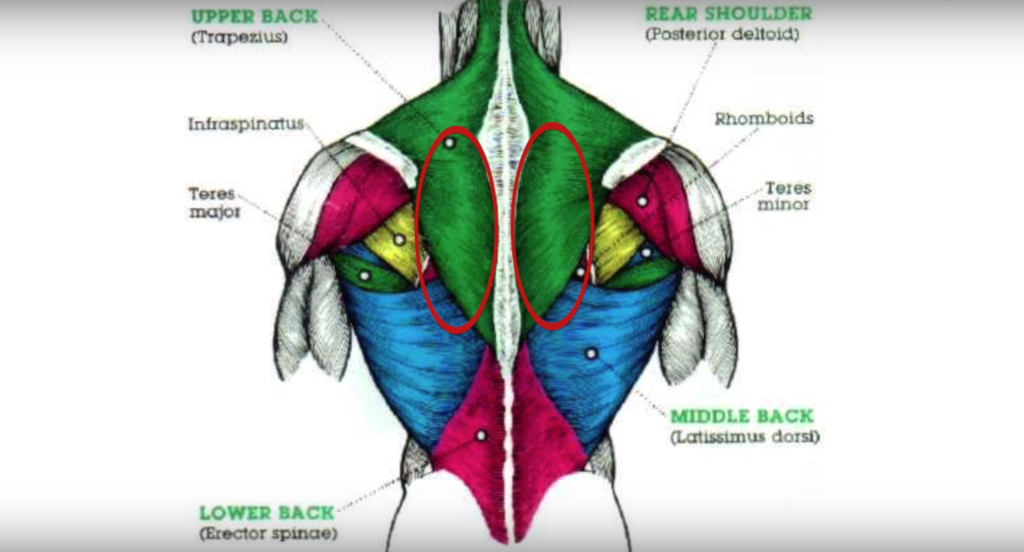
So, in order to target these specific back muscles, you’ll need to be doing the following back exercises.
1) Wall slides
The first exercise to fix your hunchback shoulder is called wall-slides.
Unfortunately, while they are pretty well-known, they aren’t performed correctly by most people.
To execute the wall-slide with proper form, you’ll need to stand with your heels, butt, upper back, shoulders, arms, and hands against the wall.
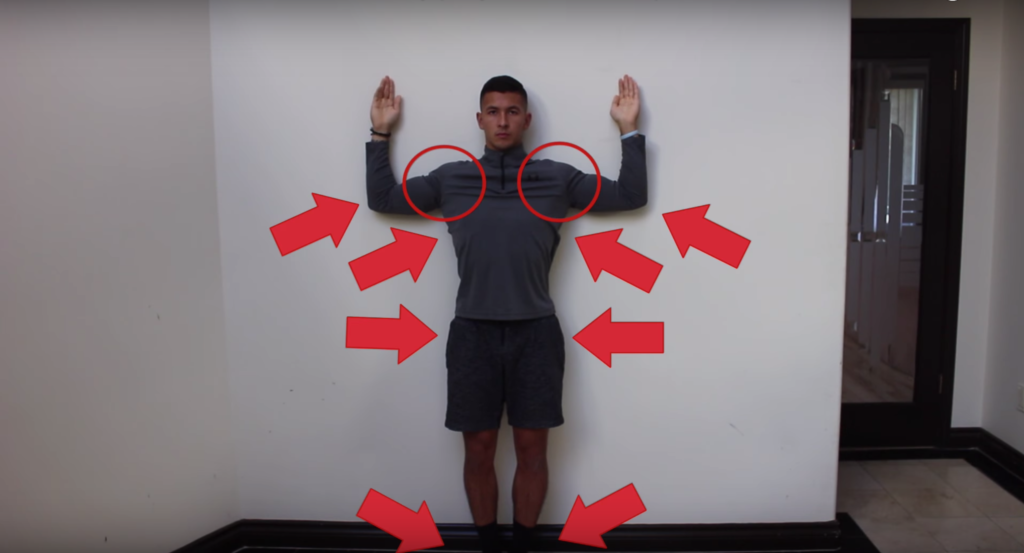
The objective of the exercise is for you to slide your hands up and down. This movement mimics a shoulder press.
It’s vital that you avoid arching your back and losing contact with the wall as you raise your arms.
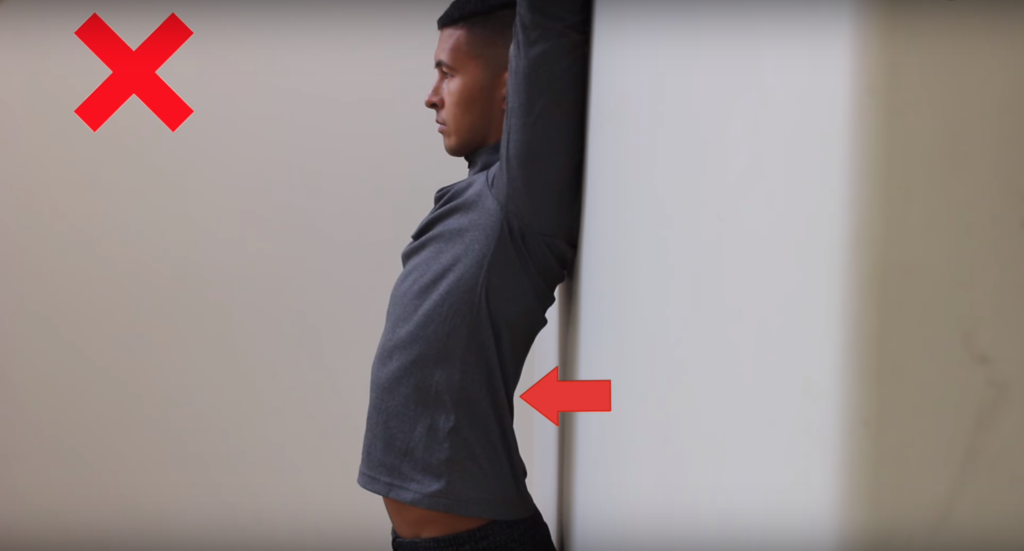
Instead, flatten your lower back before initiating the movement by engaging your abs and keep contact with the wall as you perform the exercise.
Also, don’t forget to depress your traps before starting the movement.
You should feel strong activation in the middle of your back when performing this exercise If you begin to feel it in your shoulders or upper traps, you’re likely to be doing it wrong.
If performing this exercise with proper form is too challenging for you, you can regress it by moving your feet further away from the wall.
2) Prone Y’s
The second exercise to fix rounded shoulders is called Prone Y’s.
For most people, this exercise should ideally be performed on an incline bench.
Start off by laying on the bench. Then, bring your arms straight out into a Y position with your thumbs up, depress your traps, and raise your arms to the level of your head. Keep your arms straight throughout.
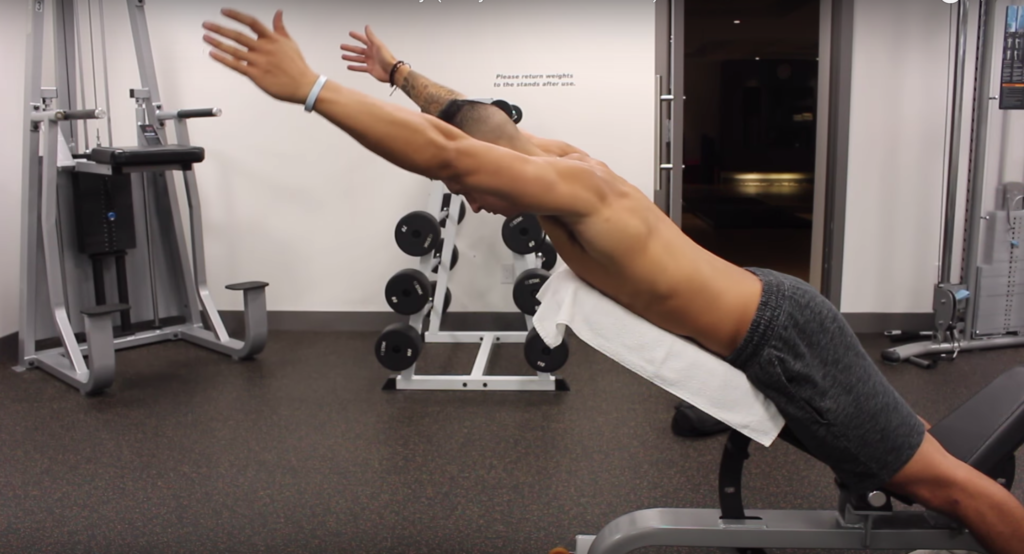
Hold at the top for 1-2 seconds and come back down then repeat the movement.
It’s important that you don’t compensate by arching your lower back or sticking your head forward during the movement.
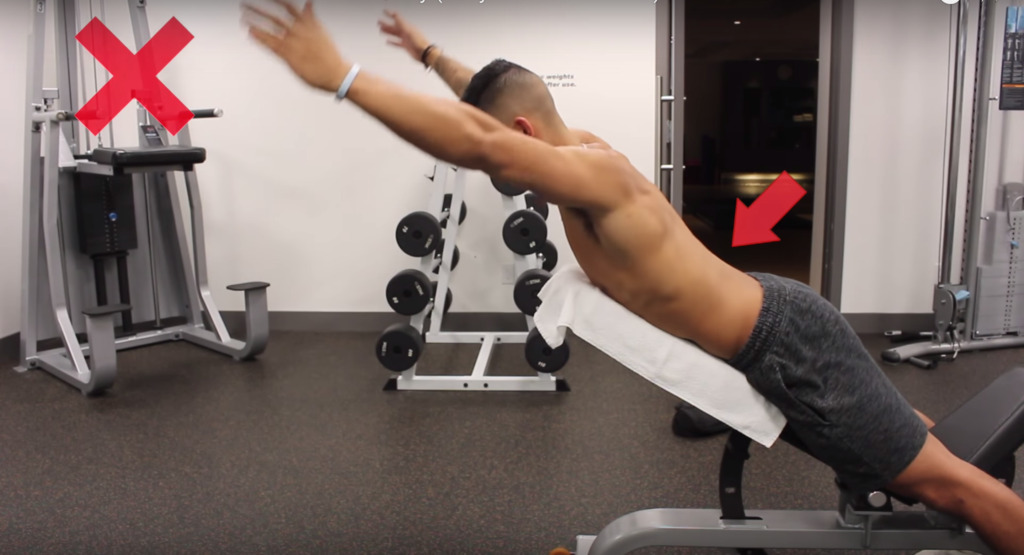
Once again, you should feel a strong contraction in your lower traps in the middle of your back as you perform this exercise.
If you want to perform this exercise at home, you can perform the exercise by leaning over a couch or doing it flat on the ground. However, note that these variations will require a little more shoulder mobility.
Mobility exercises
Excellent – you now know the two critical strengthening exercises that will help pull your back and shoulders to a more upright position.
Now, all that’s left to do for you to effectively correct your round shoulder posture is loosening up the overly-tight muscles that are pulling your shoulders forward.
1) Thoracic Extension
To cover the first exercise that will help with your thoracic spine mobility, I’ll first need to cover some foam rolling techniques with you.
Lay on the floor with your feet and butt on the floor. Place the foam roller in the middle of your back, and your hands placed over your head – this helps get your shoulder blades out of the way.
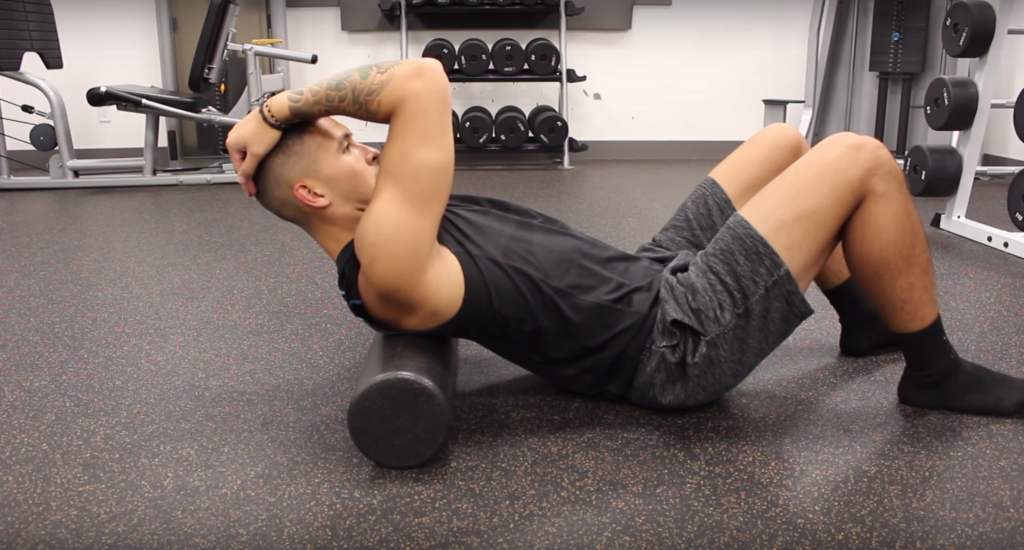
Then, you want to lift your hips into the air and slowly roll up and down for a bit to loosen up your upper back.
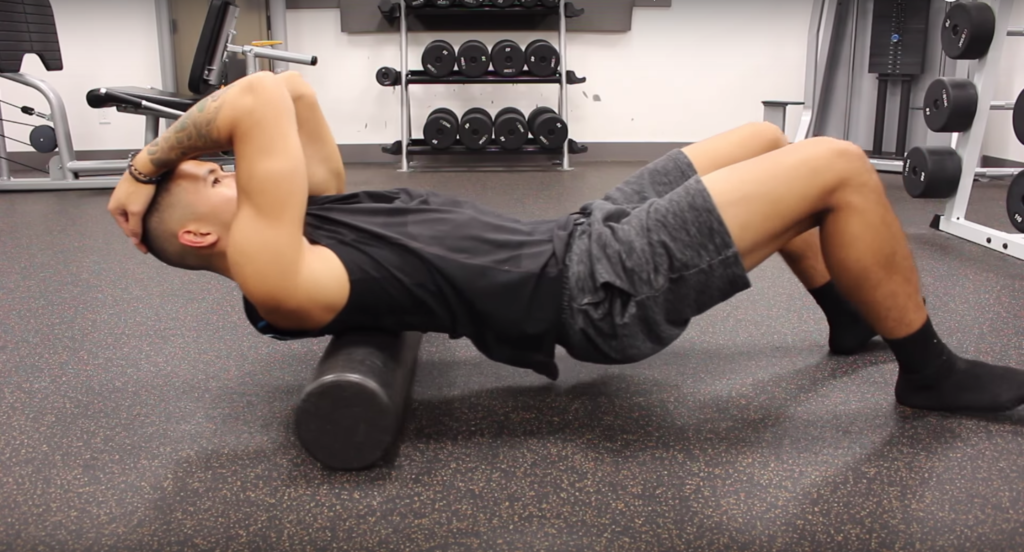
Once you’re done, put your butt back on the floor and place the foam roller between your shoulder blades. Take a deep breath in. As you exhale, extend over the foam roller while holding your head to release any tension in your neck.
Relax in this position for a few deep breaths. Then, come back up, move the foam roller slightly lower on your back and repeat the process one or two more times. You should get lower on your back each time.
2) Shoulder dislocations
I know – the name sounds scary, right? I mean, shoulder dislocations? But don’t let the name of this mobility exercise scare you. There are no dislocations involved, trust me!
Shoulder dislocations can be done with a broomstick or a resistance band (the band will be easier to start out with). Here’s a guide on how you can perform this exercise, depending on which choice you go with:
Broomstick
You want to stand straight and use a very wide overhand grip on the stick.
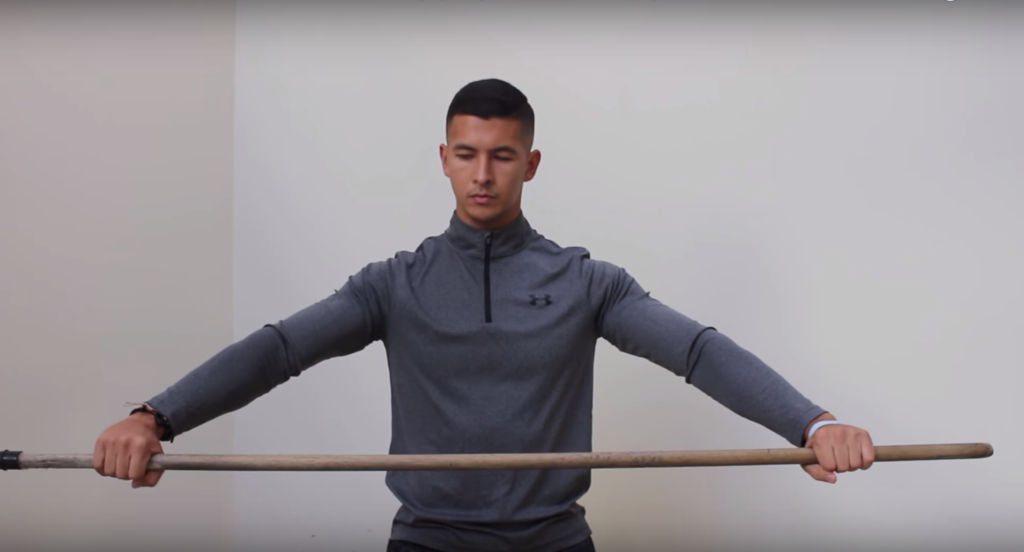
Then, you want to slowly bring the stick over your head and behind your back. Always keep your arms straight, and repeat this movement.
Take note that the more narrow your grip, the more shoulder mobility you will need.
So, you should definitely start with a wide grip and gradually narrow your grip over time. You can use a marker to jot down where your hands are placed in order to monitor your progress.
If you're enjoying this step-by-step guide for fixing your hunchback posture, you're going to love our 3-on-1 coaching program. You are going to have a coach who'll focus solely on your training and making sure you address your weak points/muscle imbalances - paving the road for optimal muscle growth. Plus, a dietitian and I will also be available to guide you every step of the way. If that sounds good to you, then:
Click the button below to find out more about the 3-on-1 coaching program:
↓
Resistance band
Stand straight and grab the ends of your resistance band with each hand. Then, hold the back in front of your waist with your hands roughly 6 to 8 inches wider than your shoulder-width. Your palms should be facing the floor.
Rotate your arms up and over your head and down to your lower back. You then want to bring your arms back up over your head and down to the front of your waist.
Once again, take note that the narrower your grip becomes, the more shoulder mobility you will need.
Another option you have is to perform the shoulder dislocations lying down with your forehead in contact with the ground. This variation will incorporate a little bit of lower trap and rhomboid involvement to help strengthen them.
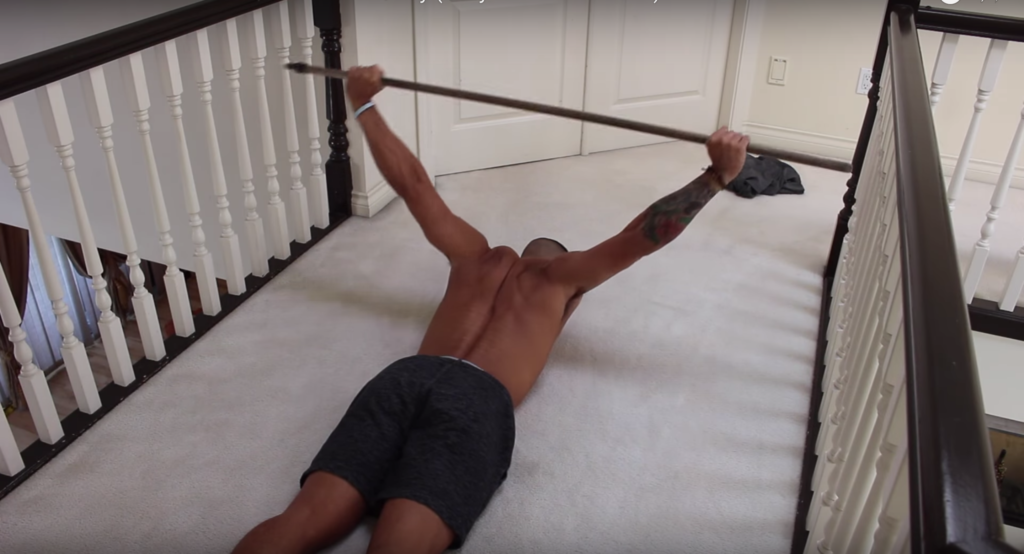
How to fix your hunchback posture in 10 minutes
Here’s a routine that you can do which will take you less than 10 minutes to complete:
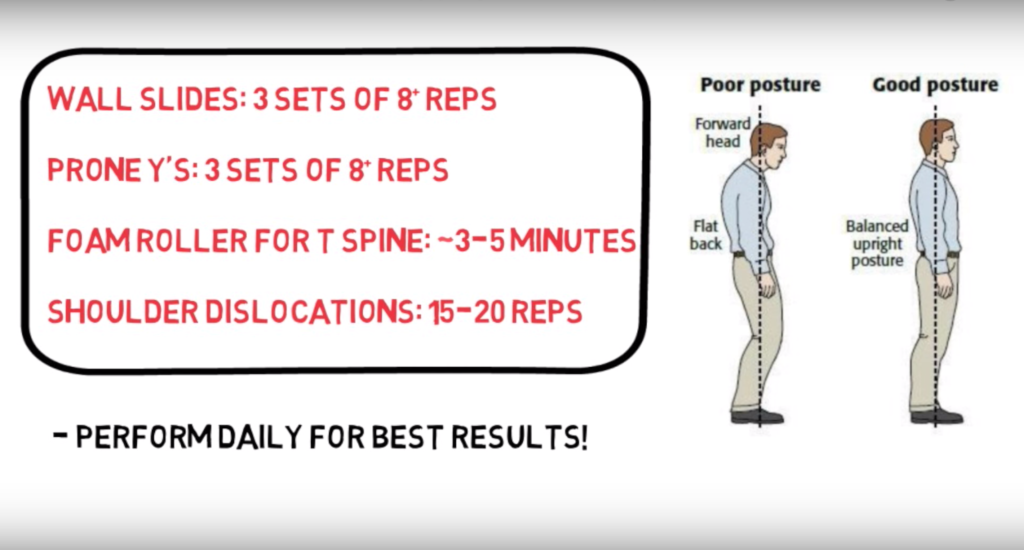
Ideally, you want to do this routine every single day if you want to improve your posture very quickly and ensure that it stays in that corrected position.
Another thing to note is that you should always be mindful of how your posture is throughout the day whether you're sitting or standing. You can do this routine as much as you want but if you’re slouching for the rest of the day, then it’s not going to help you very much.
One tip I use is to think about someone pulling your body up with a string: everything should be aligned.
I hope that by reading this article, you now understand the causes behind your hunchback and the rationale behind specific exercises I’ve picked to correct this bad posture.
If you're someone who wants to correct your posture as fast as you build muscle in the gym, I want you to know that it's really all about performing the above exercises with proper form.
Enjoyed this article? Well, I think you'll enjoy my post on the top shoulder training mistakes most people make as well. Don't miss out, there are many delicious nuggets of science-based knowledge within!
Stop wondering about your form
If you’re constantly wondering if you’re executing specific exercises correctly, there’s an easier way out.
Within my Built With Science programs, you’re provided with detailed breakdowns of exercise variations and the correct form to use.
Not sure which program to choose? Don’t fret.
I’ve created a quiz that will give you a specific individualized program recommendation based on what you’re trying to achieve.
If you’re serious about getting results, then I recommend taking the quiz to find out what your perfect program is:
Click the button below to take my analysis quiz to discover the best program for you:
↓
I hope you enjoyed this article and found it useful! Don’t forget to give me a follow and connect with me on Instagram, Facebook, and Youtube as well, in order to stay up to date with my content. Cheers!


